Kingdom Animalia #2 - The Cheetah
And here I come with a word which piss many off in the steemit community, the cheetah. Be rest assured, this article is not on our bot which is actually fun to have around, today will put to the spotlight my favourite member of the cat family. Just like we all know these guys to be the fastest land animals, but is that all about the cheetah?. Do you want to learn more about this animal? Probably why @anyx Choose to name the plagiarism bot after them?, Welcome to KINGDOM ANIMALIA #2
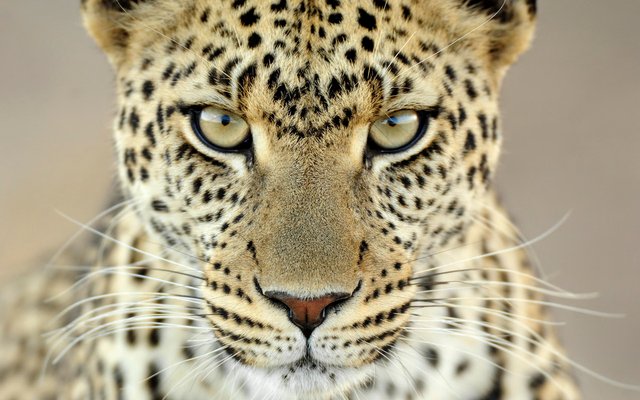 Source
SourceWhat They Look Like
The cheetah features a body slender in size, a rounded head which is quite small, a deep chest, thin legs, quite long. It has streaks on its face which colours black, spotted pelage and a spotted tail which is lengthy.
A lightly built animal, the cheetah has a slender body structure quite different from other big cats which have the robust body structure.The total length of the cheetah when measured from head to body range from 112cm to 150cm, a shoulder length of 70 to 90cm and its weight is about 21kg to 72kg. When compared to a leopard, the cheetah is quite taller as a leopard ranges from 55cm to 70cm when measured shoulders download. Cheetahs weight with respect to that of the leopard overlap as the leopard weight ranges from 28kg to 65kg.
They are much lighter when compared with a lion who’s weight for its female is about 126kg with a male at about 186kg. Cheetahs small in size are normally found in the Sahara, Iran and northeastern parts of Africa. The cheetah male is larger than its female.
With a small and round head, the Sahara Cheetah has a narrow face. They are short and small species of the cheetah and are marked on the back with black patches. Their eyes, high set on their face have a round pupil, and its whiskers are of a fine texture, fewer and shorter than other animals in the cat family. They possess a tear streak which is unique to them alone, it helps the cheetah hunt well during the day as this streak tend to protect their eyes from the rays of the sun during the day, it also helps them give different facial expression
With respect to colouration, the Cheetahs colour ranges from yellowish tan to grey-white, and its coat can be seen to have about 2,000 black spots which are of a uniform nature, the upper part of the cheetah are seen to contrast down to its under which is then seen to be completely white. A closer look was done on the cheetah, and it was discovered that each of the spots ranges from 32cm to 5.1cm and also it was discovered that the pattern of a spot of any cheetah is unique to it hence a particular cheetah can be identified based on its spot pattern on the coat. Their fur is quite short and mostly coarse with their chest down to its ventral covered with fluffy fur.
Cheetahs with different colours have been noticed over the years which include the albino form and the melanistic form of colouration. In Zambia and Kenya black Cheetahs has been seen.
The juvenile cheetah is dark with grey to blue hair with short mane which is about 8cm long on its shoulder and neck. It has quite a long-muscular tail measuring from 60cm to 80cm with a bushy tuft at its end. Its tail colour has a pattern, as two-thirds are covered with spots the other part has 4-6 ring like stripes, this arrangement of stripes on the tail is distinct to an individual, but for a sibling, the cheetah has a typical resemblance to that of its mother.
Sometimes the cheetah is confused for a leopard, but they can easily be defined by the coat as having round spots of a smaller nature when compared with a leopard. Also, the leopard does not possess the year streaks possessed by the cheetah.
Behavior
The adult cheetahs tend to stay together in groups through their lifetime
This group of male cheetahs defend their territory, and mostly, this group is normally made up by male cheetahs of the same mother, but sometimes when the male in a family is one, he may form a group with other 2 or three others.They possess a territory which has access to female cheetahs, but some males in solitary may not have a territory. Female cheetahs on the other leave the pack after weaning to stay on their own which lead to having and taking care of their cubs.
They Are Known For Speed
The cheetah is known to a hunting speed of about 64km/h in a chase with few burst when their speed varies from 104 to 120km/h.
A reliable measurement will give a typical value of 112km/h during a chase; this scores the cheetah as the fastest land animal.
Their body build is that for speed making it attain a high speed in a very short time. It's light, and thin body makes a good build for an ability to change direction quickly, a quick acceleration, speed burst thus thay can be able to catch prey with ease.
They have nasal passages which are quite large ensuring a good air flow and very enlarged lungs and heart which sees them regain stamina easily after running. They make use of their tail to steer while running, which helps them make turns easily and outrun the antelope which changing direction when running is a means of escape. Their claws help them have a firm grip on the ground while their footpad helps in tough ground.
It is recorded that half the time of Sprint, Cheetahs are known to have all four of its limbs on air which immensely contribute to stride length
Hunting Its Prey
This is a carnivore which prefers prey of medium size. Amongst its common prey is, the duiker, Blesbok, Grant gazelles, reedbuck, impala, Thompson gazelle and the springbok. Among the list of preys are the nyala, sable antelope, kudu, steenbok, oribi, bushbuck, antelope, roam, and hartebeest.
Their less frequent preys are gemsbok, giraffe, warthog, ostrich, wildebeest and the zebra.
A study has shown that the Asiatic cheetahs consume livestock which includes the wild sheep, chinkara, ibex, desert hare, and gazelles. Only when they are in a group will they think of taking out a large animal, though mothers try as much as possible to secure large prey for its cubs. There has never been a record of a Cheetah killing a human.
They kill prey when they trip them on a chase; it uses its drawclaw which is very strong to hit the prey which pushes it off balance. In killing medium or large prey, They bite it on its throat which leads to death by suffocation. It then moves the prey to a shaded area, exhausted, They breath heavily for about 55 minutes after which, eating of the killed prey begin but when in a group they all begin to eat just immediately.
Enough of the hunting theory, lets watch a hunt
Communication With One Another
The cheetahs are known to communicate mainly with vocals, though due to the several sounds produced, it is sometimes hard to denote what it is meant for my human, below are the sounds produced by a cheetah and it's meaning:
Growling: This sound is produced when the cheetah is annoyed or foresee danger, studies show the glow to consist of short pulses
Moaning: This is like Growling, but in an escalated version, this is heard when the sense of danger increase, it last about two seconds.
Agonists vocalisation: This is the combination of growls hisses and moans followed by the cheetah hitting the ground with the front paw.
Bleating: This sounds like domestic cats now.meow and it's produced when the cheetah is deprived of prey by a larger animal.
Chirping And Churning: This is a sound produced when excited.
Other ways they communicate are through their scent; sniffing each other and also grooming themselves, licking face and rubbing cheeks together.
Reproduction In Cheetahs
A female cheetah becomes matured for reproduction after about 21-22 months after birth, and the cheetahs are considered induced ovulators, they have their heat cycle in every twelve days, and this tends to vary within individuals ranging from 10-22 days.
After giving birth, a female cheetah is ready for another offering 17-20 months later.
Amongst cheetahs, urine marking is more pronounced in the male when the female cheetah is In her oestrus, the males then battles among themselves who get her, they sometimes show signs of aggression to themselves. When a male wins eventually, the mating occurs mainly at night for the Cheetahs which begins with the male who approach the female cheetah.
Within Cheetahs, no courtship is observed, and after mating, They go separate ways but meet to copulate within few days. Their cubs range from 1-8 but on a common base, 3-5. Birth of cubs is in thigh vegetation which sees the cubs produced to have their eyes shut but open after 4-11 days. Their cubs are vulnerable within few weeks after Birth hence the mother cheetah hides her cubs in this vegetation for about a month.
At six weeks of birth, the cubs begin to follow their mother around and play with her, playing within the cheetah involves a lot of agility with attacks being seldom lethal. A study of their play pattern reveals that as they improve in catching themselves, the ability to hide and crouch is developed. Thus the early days of their life is a very important aspect of their defence.
They start hunting in their early days catching juvenile gazelles, but they have to wait for about fifteen months after birth to make a catch of their own. They may stay about 13-20 months with the mother before leaving to fend for themselves, and Their lifespan ranges from 14-15 years for the female cheetah and 10 for the male cheetah.
They Are Considered Vulnerable To Extinction
According to IUCN, the cheetah is considered a vulnerable animal and listed in Appendix I, 2014 sees the cheetah be of high priority and strategies being enacted to conserve this wildlife.
On analysis, the cheetah has an estimated total number of 6700 individuals. This threat is due to the fact of the loss of its habitat due to deforestation for industrial purposes and agriculture since the cheetah is known to need a large area of land for survival.
When compared to the leopard, the cheetah is less capable to coexist with man hence interference by humans tend to disturb them in carrying out their activities which include hunting for prey and feeding. Also, the cheetah is sometimes targeted by farmers who have aims to protect their animal, but as seen, the cheetah won't take livestock a better prey.
Another threat to this wildlife is the hunt by game hunters and road kill most especially at areas where roads are constructed in the habitat of this animal. Threats by the disease are of a minor alert due to their low population density thus reducing the chance of contacting an infectious disease.
What Should Be Done
Co-operation is needed between countries to minimise encroachment into the Cheetahs boundary as they are known to not like humans in their territory..
A study done in 2016 have shown that ecotourism has a significant impact to conserve the cheetah. Since encroachment might need to be in its boundary once in a while, there is need to keep the Cheetahs in a reserve which will be free from any predator or poacher; this will go a long way to conserving this species.
Financial needs are needed to aid the cause of conserving the cheetah and awareness at its peak level should be brought to play to ensure that the cheetah does not get any form of unnecessary disturbance as they are a very sensitive animal to interference by humans.
Some Facts About The Cheetah
Mothers Teach Their Cubs To Hunt: The mother cheetah instead of killing its prey, bring it back alive for the hunt game, she releases the prey for her cubs to chase , by doing this teach them how to survive.
she knows victims might escape if she leaves it healthy, so she trips her victim giving her cubs an advantage in the hunt.
The Females Are Loners But Males Hunt In Group Sometimes: For females, they tend to leave their family after two years from birth to live life alone, but this is not so with the male cheetah as they stay together even when matured.
They Help Humans Hunt: They have never been domesticated fully, but they can be tamed and if so help during hunting, and this has been so for centuries dating back to the ancient Sumerian, the pharaohs of Egypt, emperors in India and Akbar the Great who was known to have many pet Cheetahs.
A Natural Lazy Cat: Though they are known for their ability to Sprint, they spend most of the day doing nothing. A study confirmed that they spend only 12% of the day moving and the other part lazing about, probably conserving their energy for a big speed burst.
They Cant Roar: Unlike other big wild cats, They can't roar. Just like the household cat, they purr, but the sound known to them is the chirping sound which sounds like that of a bird.
Thoughts Of An Animal Lover
Just like we have seen in this article, the cheetah is a wonderful cat with a colouration which will just keep one stunned, I do like the cheetah. They are my favourite in the cat family, their spots, how beautifully placed on their coat, and body shape which is just perfect for the sprint, my advice, don’t ever get chased by a cheetah. here is a summery video of a cheetahs love
By now you might have speculations on why our plagiarism bot was named after this animal, was it for its speed? Probably, it's so sad that they are considered vulnerable. Though they have not gotten the red flag of endangered, we should try as much as possible to conserve this species in any way we can, it will be sad to loose something this beautiful.
Missed previous episode of Kingdom Animalia, you are missing out the fun
Kingdom Animalia #1 - The Giant Panda
Have you Seen The Extinct Series?
The Extinct #3 - The Caribbean Monk Seal
REFRENCE
About The Cheetah
Save The Cheetah
General Facts About The Cheetah
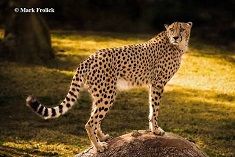.jpg)
.jpg)
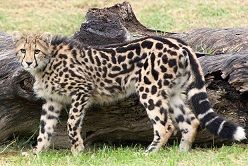
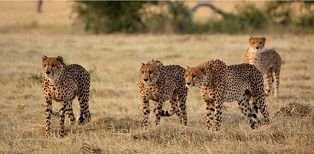
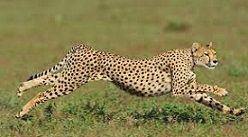.jpg)
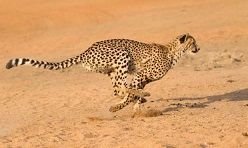
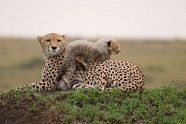
.jpg)
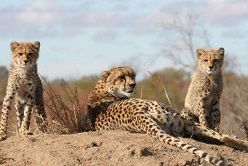

Again a very good post @preciousdave. Your final statement was very funny for me. "Don't ever get chased by a Cheetah". :-)
Thanks @bala41288, with that speed, the odd for sure won't be by your side, most especially when you are chased on steemit by a bot of that nature :)
Good post. But there are a couple points I’d like to just bring up for it.. Two of your photographs are of jaguars. Where stated that they have a low chance of contracting a disease due to their low population i feel is inaccurate, because if a disease is contracted by an individual in a low population, then it has a higher chance of wiping out the whole group. Courtship is observed in all cat species with the Male sticking with the female for up to 3 days whilst they mate. I also think for posts like this you could avoid writing about how they can be tamed or live with other animals, we should be encouraging people to not want wild animals as pets as this is a huge problem with the illegal pet trade. That’s entirely your choice to write I just feel in an educational post it should be avoided :)
With respect to cantacting diseases, the cheetahs live in few groups and sometimes alone(most especially, female cheetahs) and just like we know, they are territorial animals, and with their low population, this simply entells that a diseases attack on a group of Cheetahs is less likely to lead to an epidemic on the cheetah specie. Just like you might have observed writing on these animals, sources have information mixed up most times, Thanks for pointing out a few lapses in information,will do better at the research. Have learnt a lot from your contribution :)
Although I see what you are saying I still don’t agree. Smaller populations of animals are at huge risk of diseases that will wipe them out. The cheetah has had a extreme reduction in genetic diversity which is called a “bottleneck” that sadly has caused a reduction in sperm quality, focal palatine erosion and they are high susceptibile to the same highly infectious diseases. Sadly, the more we increase our population, habitat fragmentation occurs thus increasing inbreeding, leading to a further loss in genetic diversity. These factors sadly do contribute to high risk of infectious diseases wiping out the population.
Always happy to help out I enjoy your work :)
Now I understand your view, quite a valid argument made, and now am like "yeah!!, she really do know these guys!! :) ".
Hope to catch you someday in the community chat, that will be an ocean of knowledge. Thanks once more, How is Basil?, send my regards :)
Basil is great! Will try and do an update on him soon. You are welcome, glad to of helped :)